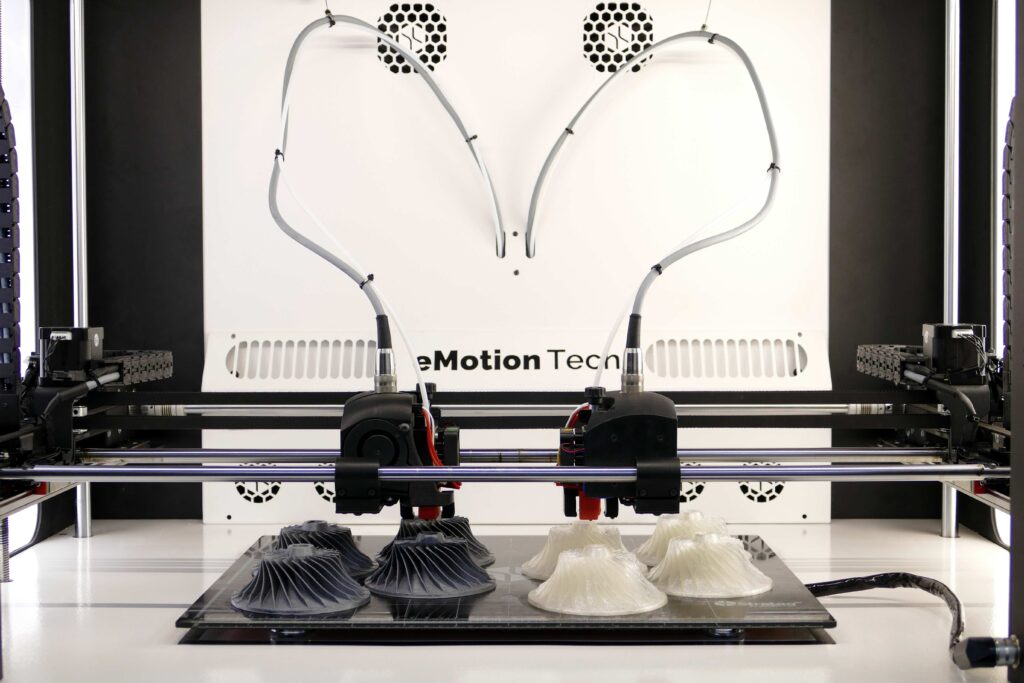Additive manufacturing (AM) is a complex and convenient manufacturing process. It uses advanced fabrication technologies to help engineers develop products quickly and efficiently. How does this type of manufacturing relate to rapid prototyping? Discover the answers here.
Additive manufacturing allows engineers to create complicated designs without heavy-duty machining. This helps cut lead times, sharpen methodologies, and reduce material waste. However, many teams rely on rapid prototyping to reach the AM stage without mistakes. Understand how they relate and make the most of your efforts.
This article will describe how additive manufacturing works in tandem with rapid prototyping. It will also briefly discuss the differences between AM technologies and 3D printing. Finally, we’ll explore the potential applications of AM-RP planning and examine ways to improve your outcomes. Let’s begin.
Table of Contents
Additive Manufacturing Overview
Additive Manufacturing vs. 3D Printing vs. Rapid Prototyping
The Additive Manufacturing Process
- Material Extrusion
- Sheet Lamination
- VAT Photopolymerisation
- Powder Bed Fusion
- Material Jetting
- Binder Jetting
- Directed Energy Deposition (DED)
Benefits of Additive Manufacturing and Rapid Prototyping
Additive Manufacturing Benefits
Using Rapid Prototyping to Achieve ISO Standards in Additive Manufacturing
Tips for Taking Advantage of RP and AM Technologies
Additive Manufacturing Overview
The first examples of additive manufacturing were nearly forty years ago. Since then, manufacturing techniques have undergone multiple advances alongside emerging technologies. Product developers can use efficient, sustainable, and cost-effective methods to design and create innovative items. Years ago, that was only a pipedream.
This type of manufacturing is sometimes called generative manufacturing. The process is crucial to competitive companies in highly regulated industries because they help conserve materials and reduce lead times. Some techniques also assist engineers with prototype construction projects involving intricate designs or custom components.
“Achieve the high precision and low mass combination not possible with most traditional manufacturing.”
DID YOU KNOW: In 2020, NASA sent the Perseverance Rover to Mars using 3D-printed tools and on-demand aeronautic parts.
Additive Manufacturing vs. 3D Printing vs. Rapid Prototyping
The terms 3D printing and additive manufacturing are often used synonymously. However, AM differs from 3D printing and rapid prototyping in multiple ways. Each technique is efficient and resourceful, but understanding the variables is essential. Here are the primary differences to note:
- Additive Manufacturing – This fabrication process joins materials to make objects from three-dimensional model data. Typically, operators create these objects one layer at a time.
- 3D Printing – On the contrary, this process involves fabricating objects by depositing material with a print head, nozzle, or other printing technologies for intricate geometries.
- Rapid Prototyping – This describes a group of techniques used to fabricate scale models using 3D CAD data. However, operators use 3D printing or additive manufacturing to construct or assemble prototypes.
In other words, this is an umbrella term describing the overall process. Meanwhile, 3D printing defines a specific technique used in multiple industries, and rapid prototyping supports both with efficient troubleshooting benefits.

We offer fast, high-quality, tailored PROTOTYPING solutions for leading companies in a wide range of industries.
superior Rapid PROTOTYPING
The Additive Manufacturing Process
AM technology is fascinating on its own, and so is the process. Operators create components by adding material instead of subtracting it. This means they don’t need special tools for CNC machining and can enjoy safer work environments. Furthermore, many product developers can complete projects without injection molding, welding, or heat treating using only 3D CAD data.
“These processes significantly improve manufacturing flexibility compared to conventional methods.”
Also, AM offers a broader range of compatible materials. Unlike traditional approaches, AM technology lets operators develop products from plastics, synthetic resins, and ceramics using one of seven tailored processes.
1. Material Extrusion
Material extrusion, or fuse deposition modeling (FDM), draws material through a nozzle to be heated and deposited in layers. Operators can manipulate the nozzle in various directions to achieve intricate designs.
2. Sheet Lamination
The sheet lamination process uses laminated object manufacturing (LOM) and ultrasonic additive manufacturing (UAM). It involves sheet metal or metal ribbons joined with ultrasonic welds.
3. VAT Photopolymerization
This additive manufacturing process uses a liquid photopolymer resin to create three-dimensional shapes one layer at a time. It’s best suited for fabricating specific parts, so talk to your team first.
4. Powder Bed Fusion
PBF, or powder bed fusion, involves direct metal laser sintering (DMLS), selective laser melting (SLM), and electron beam melting (EBM). Use it to manufacture parts with multiple materials.
5. Material Jetting
Use this additive manufacturing technique to create components with a machine similar to an inkjet printer. Jet material to construct an uninterrupted or Drop on Demand (DOD) platform.
6. Binder Jetting
Binder jetting is a well-known additive manufacturing process using two standard materials – powder and a binding agent. Print heads deposit the conglomerate via X or Y axes in alternating layers.
7. Directed Energy Deposition (DED)
This additive manufacturing option describes various fabrication techniques to repair existing features. Some include directed light fabrication, 3D laser cladding, and laser-engineered net shaping.
The best additive manufacturing approach and your need for rapid prototyping can depend on multiple factors. Generally, product developers require RP to uncover design flaws before display or mass production. These two fabrication procedures work together by supporting innovation with efficiency and practicality.
Benefits of Additive Manufacturing and Rapid Prototyping
Many engineers think additive manufacturing technologies represent an exciting future for product development. The global AM market size is already nearly $14 billion. Some experts predict it will reach close to $17 billion by 2023. Meanwhile, rapid prototyping is also growing by leaps and bounds.
The industry boom is most likely due to enhanced manufacturing speeds. It takes product developers less time to fabricate parts with AM. Combined with rapid prototyping, teams can churn out higher-quality items in less time and with fewer mistakes. This helps reduce product recalls, boost industry morale, and invite more meaningful advances.
Another advantage is the use of 3D CAD software during the early stages. Operators can swiftly transfer design data without worrying about fudged interpretations of essential goals.
“Starting with rapid prototyping and ending with additive manufacturing provides much-needed integrity and continuity to project management.”
In turn, this can help foster more automation and productivity in high-demand environments.
Additive Manufacturing Benefits
AM offers several benefits to competitive product developers and innovative teams. Here are some other advantages of using additive manufacturing to fabricate parts:
- Decreased start-up costs – Get more but spend less with efficient and cost-effective methods beginning with rapid prototype modeling.
- Develop customized parts – Design for mass distribution or create components for individual clients with a tailored approach.
- Integrate digital designs – Transform your two-dimensional concepts into three-dimensional objects using additive manufacturing and RP.
- Reduce carbon footprints – Using conservative manufacturing, develop crucial designs with minimal waste, energy usage, and environmental impacts.
- Lowered manufacturing expenses – Additive manufacturing, 3D printing, and rapid prototyping offer cost-effective solutions to modern fabrication problems.
- Quicker prototype to production speeds – Expedite your project deadlines with tools to help eliminate minor mistakes and cross the finish line faster.
This kind of manufacturing following rapid prototyping can also help eliminate raw material excesses and simplify digital design integration. Discuss the options and advantages with your team for more insights.
Rapid Prototyping Benefits
Enhance your experience with additive manufacturing by understanding RP advantages and how each relates to the other. The primary concept of rapid prototyping is to offer more speed and freedom to product developers. However, the goal of AM is to produce what engineers create during the RP process quickly.
These are some other benefits of rapid prototyping for teams using additive manufacturing technologies:
- Reduce your time creating prototypes
- Correct errors and fix flaws competently
- Produce tangible models of your products
- Present detailed examples to stakeholders and investors
- Implement upgraded design features quickly
Rapid prototyping also helps you save money on tooling costs and design reiterations. RP processing before additive manufacturing is less expensive than traditional fabrication. It might require a more substantial upfront investment, though.
NOTE: Rapid prototyping and additive manufacturing costs depend on the materials, techniques, and lead times.

We offer fast, high-quality, tailored PROTOTYPING solutions for leading companies in a wide range of industries.
superior Rapid PROTOTYPING
Common RP Techniques
Many rapid prototyping methods are compatible with additive manufacturing and 3D printing technologies. This helps product development teams collaborate and combine ideas on digital platforms during various stages. It also allows engineers to tailor their approach based on project goals, ISO regulations, and other specifications.
The most common RP methodologies include the following:
- Selective Laser Sintering (SLS)
- Fused Deposition Manufacturing (FDM)
- Stereolithography (STL)
- Mask Stereolithography (SGC)
- Stratified Spray (BPM)
- Stratified Multi-Jet Manufacturing (MJM)
By discussing these details with your team, you can learn more about these rapid prototyping options and how they relate to additive manufacturing strategies. The emphasis is on RP helping create base models that AM and 3D printing experts can fabricate into usable parts.
Using Rapid Prototyping to Achieve ISO Standards in Additive Manufacturing
General manufacturing involves multiple steps to ensure high quality, low costs, and precision. Many fabricators utilize ISO standards as a baseline. This helps them determine product value, practicality, and legitimacy. However, it can also help teams guarantee optimal part performance in various applications.
Meanwhile, additive manufacturing involves emerging technologies and synthetic materials. Some engineers could encounter learning curves while developing innovative designs or testing concepts. Rapid prototyping helps reveal troublesome features and allows teams to improve while still pertinent. This can be a tremendous advantage for competitive companies, start-ups, and entrepreneurs.
RP plays an essential role in additive manufacturing because it supports ISO compliance regardless of the variables. A swift and efficient fabrication method isn’t always enough to charge ahead of the trends. Good designs must undergo rigorous testing, even if teams can create the final product within hours.
Model testing is something most engineers can’t skip. Consumers, investors, and stakeholders often require excellent due diligence from manufacturers. This is especially true for teams making parts for the automotive, aerospace, and science fields. However, it is equally critical for consumer products and commercial-grade items.
FACT: Some industries will refuse to distribute products with certification from the International Organization for Standardization.
Tips for Taking Advantage of RP and AM Technologies
Rapid prototyping and additive manufacturing provide a one-two punch for enthusiastic teams. Develop better products using RP and 3D CAD software. Then fabricate the model using advanced AM techniques like 3D printing.
Next, use these five tips to improve your experience and outcome:
- Get ready for a challenge. Prepare to encounter obstacles while learning to use new technologies for manufacturing. This could include team meetings, master classes, or Q&A sessions with an expert.
- Modify your support structures. Ensure maximum security and minimal contact with AM and 3D printing processes. Explore options with your team if you are unsure how to proceed.
- Work to reduce material warping. This might involve changing various design aspects, such as materials and geometries. Use rapid prototyping to test multiple solutions.
- Look for opportunities to be creative. Rapid prototyping and AM let you think artistically and attempt revolutionary ideas. Take advantage.
- Check for appropriate tolerances. Most designs require optimized geometry considerations to fit SLS 3D-printed parts. Consult your team for more specific information.
You can also do these things to prepare for a smooth RP-AM collaboration:
- Develop a recognizable design concept first.
- Determine your preferred communication methods.
- Explore different rapid prototyping approaches.
- Examine various additive manufacturing techniques.
- Compare multiple strategies to uncover the most efficient.
- Discuss your concerns with staff and ask questions.
- Analyze unique products made with RP and AM technology.
- Integrate relevant feedback during the early stages.
Conclusion
Additive manufacturing and rapid prototyping are related, albeit different. Clever engineers use them in tandem to develop innovative designs with less wasted time and raw materials. These complex but convenient processes can help catapult fabrication potential on a global scale. Their implementation is already causing waves in the manufacturing industry.
Advanced technologies have ushered in a new era for product developers. Teams can design components quickly and efficiently using sophisticated software. Then they can move straight to creating the model using additive manufacturing, 3D printing, or other modern methodologies.
 About the Author
About the Author
James Murphy is the founder and CEO of HLH Rapid – a hybrid CNC machine shop fusing Western service and quality with Eurasian industry influences for over 14 years. His advanced enterprise uncovers cost-effective rapid injection molding techniques to remain unmatched by industry competitors. Murphy’s full-service fabrication and manufacturing methods span six dedicated zones, from 3D printing and vacuum casting to sheet metal prototyping and project management. His expertise also includes high-efficiency machining within strict yet volatile markets.
Murphy earned an MBA after becoming inspired by his father’s hands-on craftsmanship. As a budding entrepreneur, he taught English and studied Chinese to pursue pioneering objectives. His groundbreaking approach helps build the future by providing well-rounded manufacturing services to innovative Western businesses. When he’s not offering upscale RP and CNC, James enjoys art-house movies, Thai boxing, and spending time with his growing family.
Visit HLHRapid.com for an instant quote on rapid prototyping services.



This Post Has One Comment
I’m not that much of a internet reader to be honest but
your blogs really nice, keep it up! I’ll go ahead and bookmark your
website to come back in the future. Many thanks